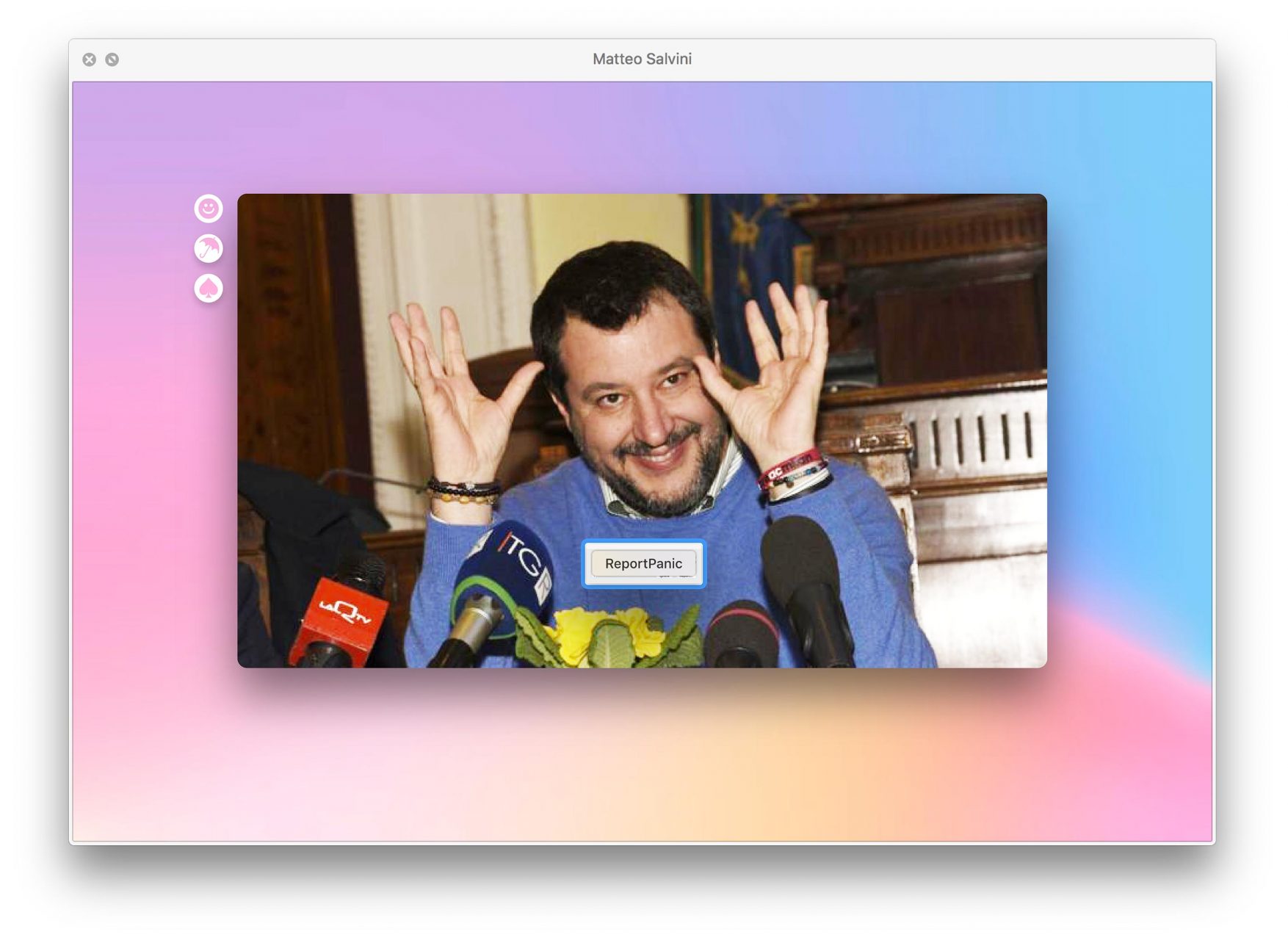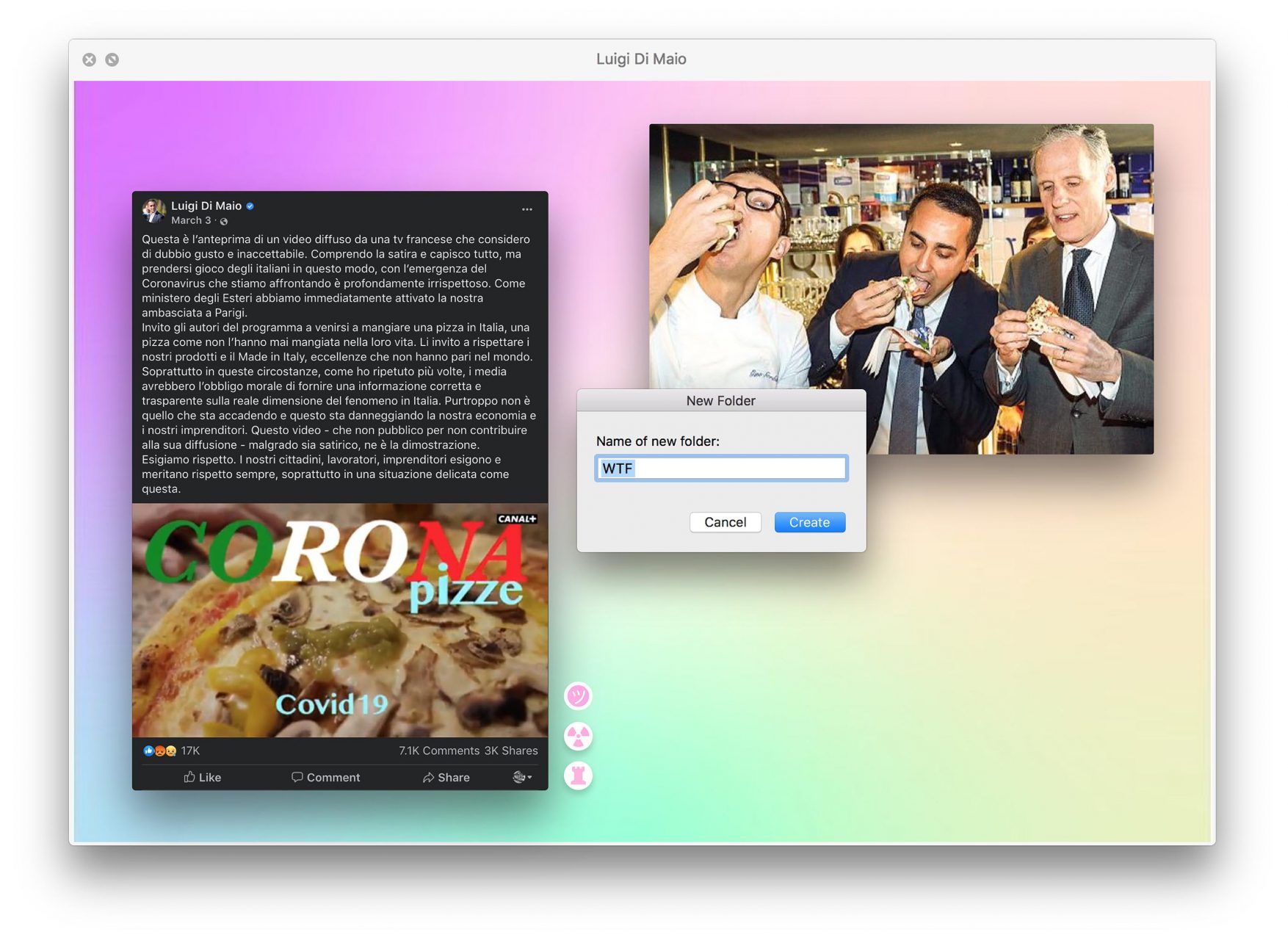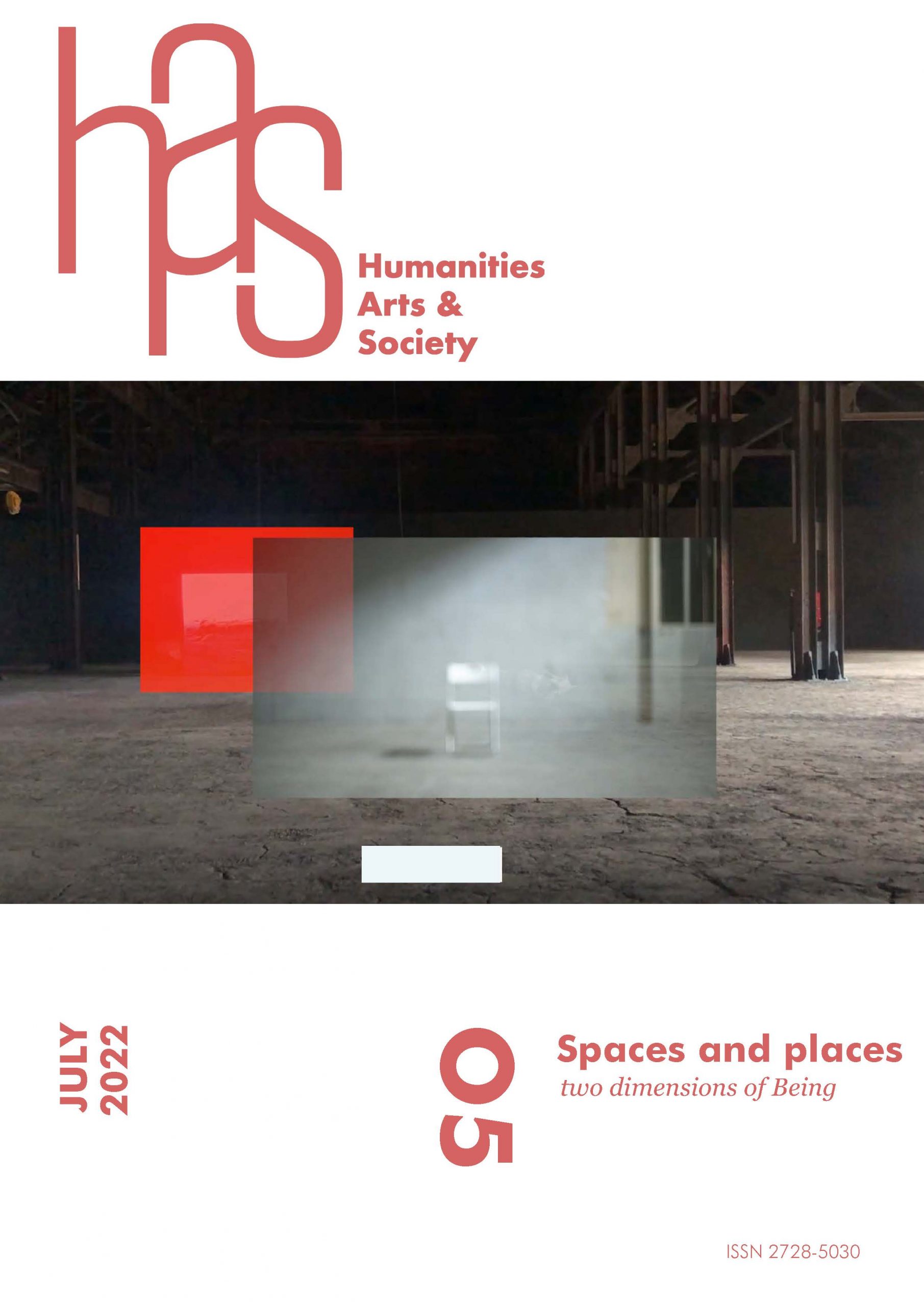Throughout history, political and physical spaces have always been intertwined, outlining the boundaries of power and democracy. However, starting in the 21st century, the collision between the political sphere and the Information Age generated a series of transformations which relentlessly changed the ways citizens experience democracy, in terms of both space and time. As Joshua Meyrowitz foresaw in his masterpiece No Sense Of Place, media can indeed change the logic of the social order “by restructuring the relationship between physical place and social place and by altering the ways in which we transmit and receive social information.” (Meyrowitz 1986, 308)
While the Western pre-Information Age’s political space often corresponded to an identifiable, tangible, and social dimensionality, the contemporary space of and for politics is now moving toward an ever-changing, more slippery ground. Clearly, this shift did not result from an unequivocal event, but rather took place over the course of many years, and at pace with technological development. Citizens and politicians went from pursuing their political activities in designated places to pursuing them in “non-supervised” spaces. They went from living democracy in “explicit” venues, consisting of floors, walls, and ceilings, to “implicit” venues—places, like social media, not necessarily thought appropriate for politics, and perhaps not even accordingly policy-equipped. But how, and when, did this shift happen?
On the threshold of the new millennium, in his Raoul Wallenberg lecture entitled The Spaces Of Democracy, the sociologist Richard Sennett advanced an analysis that tried to examine the relationship between public spaces and democracy. In the lecture, Sennett looked at the ancient Athenian urban model, which included the agora, the open public space designed for all kinds of encounters between citizens, and the Pnyx, a space for comprehensive and organized discussion. Sennett indicates that while the agora is still present in today’s Western political world (as it were), the Pnyx has become practically extinct. Sennet argued that, in a scenario dominated by the decentralization of politics, ordinary citizens lack spaces in which they can gather in order to deliberate about public affairs, and that the use of televised images “strengthens the politician’s capacity to conceal rather than stand nakedly revealed.” (Sennett 1998, pp. 26-27)
Similarly to Sennett, political theorist Warren Magnusson claimed in 1996, via his book The Search For Political Space, that a disjuncture occurred between the political spaces that were being claimed democratically and the ones offered as sites for public participation. (Magnusson 1996) According to Magnusson, we should give up on the idea that there is an absolutely determined, singular space in which politics occurs, as politics is not one thing, but many things simultaneously related to one another. Furthermore, he affirmed that we should start understanding political space, not primarily as a physical place, but more as an environment, one which is created and whose qualities differ depending on the context in which they are applied. Conceived this way, spaces are not based solely on the existence of physical objects, but also on laws, conventions, guidelines, and institutionalized social practices, all of which are non-physical elements, but that nonetheless apply to the respective space just as material elements belong to it.
Lastly, the political philosopher John R. Parkinson claimed that we should start differentiating between space, as the form itself, and place, as the cultural, political, and historical qualities that inhabit form. (Parkinson 2012) By asking to what extent does behavior respond to the physical object, and to what extent is it responding to contextual elements, Parkinson starts with the sociological distinction between space and place, building from Gieryn’s (2000) and Agnew’s (1987) theories. Gieryn agrees that space means geographic location or built form, while place is a space filled up with people, practices, objects, and representations. Place, according to Agnew, distinguishes between the settings and the social practices and processes that go on continuously in them, including the feelings that people might grow around those spaces and practices. Referring to the authors, Parkinson concludes that elements of the built environment do not have intrinsic meaning, as meaning is what we, as individuals and through personalization, deliberately assign to form.

From the theories briefly recounted above, we can extract three main points. The first is that, in recent decades, citizens have lacked spaces in which they can gather in order to deliberate about public affairs. Indeed, despite the mild attempt made by the bureaucratic systems of many Western countries to innovate over the past few years, there still remains a visible gap between the institutional-bureaucratic apparatus and the citizens, who as a result feel marginalized, uninvolved, and excluded from the exercise of democracy.
Secondly, political spaces should not be conceived solely as physical, but also as environments or places that can be rooted both in the “analogue” as well as in the virtual world. Lastly, we should make a distinction between space, regarded as the form itself, and place, the form filled with cultural, political, and historical connections. This means that, in the contemporary political realm, one can no longer recognize a political space only (or primarily) because of its borders and tangible elements. On the contrary, this expansion of participatory arenas, combined with the inability of institutions to properly represent citizens, has partially deleted the boundaries of physical spaces and has fostered new political environments which extend to the virtual. On digital media, particularly social media, leaders as well as users can themselves create places where ideas, representations, and meanings are shared and established on a daily basis. They are liquid yet very appealing environments, able to unite citizens of all ages and backgrounds and shape a sense of community—a sense of place.

In this scenario, it is particularly interesting to see how memes bloomed on social media as a new form of political communication, creating a new place for the exchange of symbolic meanings and giving birth to a phenomenon known as political fandom. The concept of political fandom has been deepened over the last decades by many academics in a wide range of fields, mainly focusing on the significant overlap between fan communities and the increasingly mediatized world of politics.1 The roots of this phenomenon are deeply tied to the personalization of politics, which over the years has generated an ever-growing presence of political actors on social media as well as new ways to engage people in political discourse. And, although the personalization of politics has long existed via traditional media such as television and radio, the diffusion of social media in the last decade has extended the political field of action to new players. In this context of collective action, individuals engage in politics through personal aesthetic expressions that are shared via social media, and that see the blending and contamination of different genres. When fandom applies to politics, we usually witness the creation (and consumption) of new forms of aesthetic representation capable of expanding the means for political engagement and developing a collective and subcultural identity achieved through a bottom-up system. But why are memes so powerful in creating a new place for political discourse to thrive?
First of all, memes constitute a temple for the vernacular, a reservoir of socially-shared signs. Since memes represent a crossing point between the ephemeral (the visual representation) and the physical (its repercussions in “real” politics), political meme accounts can constitute places where people identify with certain symbols, ways of saying, mottos, and ambiances. Through the use of political memes, meanings draw from popular imagination and eventually end up creating a sense of place. As much as for built environments, memes do not have intrinsic meaning—their meaning is generated through personalization, taking possession, completing it, changing it. Memes can thus become vehicles for reading the physical world and become “charged” with a specific political meaning solely by virtue of being employed in a particular political context.
Secondly, memes are crucial to the creation of a cultural identity based on symbols. In fact, because they favor the use of visual imagery, the creation of symbols can help to structure a sense of cultural and—sometimes—national identity. Through the methodical and repetitive use of certain pictures, practices, and discourses, memes generate images that eventually acquire power for individuals and groups by becoming “culturally canonical.” In a way, memes are digitally retooling culturally-familiar signs and practices in order to construct new visions of a meaningful social existence, fabricating new senses of community, and thereby accumulating an archive of visual experiences that are part of a new, socially-produced visual culture. Because they share a common visual repertoire, memes are able to shape a sense of belonging to a community, almost like party headquarters used to do.
Lastly, from a political angle, we could say that it is possible that the gap created by both politicians and institutions and the public they serve allowed the creation of a new place with the potential to be exploited in the future by new forms of political discourse, such as memes. In this sense, memes bloom out of the continuous dissolution of physical spaces of and for politics, creating symbolic digital environments—especially on social media—that trigger a sense of identification or recognition, which in turn has an impact on their political efficacy. Memes do not need physical spaces in order to proliferate. On the contrary, because they do not rely on spaces but rather on places, they are released from any kind of stagnation or solidity related to form, and benefit from the features of digital environments, which allow the rapid creation and sharing of ideas, representations, and meanings.

Political fandom has proved to be effective in the construction of new electorates that engage the development and maintaining of relationships between citizens, candidates, and parties—for good or for bad. Furthermore, political fandoms have the power to establish imagined communities (Anderson 1991), as they allow people from different geographic locations to overcome time and space, and to generate virtual communities based on common interests. Social media are especially crucial in this process, because they allow people from one or more nations to gather and to create collaborative relationships. By leveraging the power of collective intelligence (Levy 1999), political fandoms on social media lead to a collectivistic participation in political action through the mobilization of each user’s personal skills. Such forms of involvement influence not only the way in which political images are produced and shared, but also the relationships among the agents involved in this process. In this sense, social media are able to establish formal and highly generative environments from which new and innovative aesthetic experiments can emerge. Political fandoms pave the way to new dialogic forms of participation in which, thanks to the affordances of new media, grassroots communities can shape new social structures and—sometimes—influence the voting behavior of citizens.
This essay derives from research conducted for the project PEPP¥, developed for the online exhibition GEO—DESIGN: COVID-19 curated by Martina Muzi and funded by Design Academy Eindhoven ( → https://covid.geodesign.online/projects/noemi-biasetton). Realized in the form of a video-essay, PEPP¥ arises from the urge to make sense of my quarantine experience in Italy, during which – like many Italians – I have been relentlessly watching and listening to political debates on social networking sites. Eventually, the project uses the interface of the desktop as a canvas to tell the chronological history of two opposing narrative styles dominating the debate created around COVID-19: argutainment and political fandom. In particular, the video analyzes the political rise of Italy’s Prime Minister Giuseppe Conte, whose growth in popularity was supported through the creation of memes, songs, video-games and other user-generated content by the Italian web community.
Footnotes
1 To learn more about political fandom, see Erikson 2008; Bennett and Segerberg 2011; Bennett 2012; 2014; Gray, Sandvoss, and Harrington 2017; Brough and Shresthova 2012; van Zoonen 2005; Morimoto and Chin 2017.
References
Agnew, John A . Place and Politics: The Geographical Mediation of State and Society. Routledge, 1987.
Anderson, Benedict Richard O’Gorman. Imagined Communities: Reflections on the Origin and Spread of Nationalism. Verso, 1991.
Bennett, W. Lance. “The Personalization of Politics: Political Identity, Social Media, and Changing Patterns of Participation,” The Annals of the American Academy of Political and Social Science No.644, 2012, 20–39.
Bennett, W. Lance and Alexandra Segerberg. The Logic of Connective Action: Digital Media And The Personalization Of Contentious Politics. Cambridge: Cambridge University Press, 2014.
Bennett, W. Lance and Alexandra Segerberg. “Digital Media and the
Personalization of Collective Action.” Information, Communication & Society Vol. 14 No. 6, 2011, 770–799.
Brough, Melissa M. and Sangita Shresthova. “Fandom Meets Activism: Rethinking Civic and Political Participation.” Transformative Works and Cultures 10, June 2012.
Erikson, Edward. “‘Hillary Is My Friend’: MySpace and Political Fandom.” Rocky Mountain Communication Review Vol. 5 No. 1, 2008, 3-16.
Gieryn, Thomas F. 2000. “A Space for Place in Sociology.” Annual Review of Sociology Vol. 26 No. 1, 2000, 463–496.
Gray, Jonathan, Cornel Sandvoss, and C. Lee Harrington. Fandom, Second Edition: Identities and Communities in a Mediated World. NYU Press, 2017.
Levy, Pierre. Collective Intelligence. Cambridge, Mass.: Basic Books, 1999.
Magnusson, Warren. The Search for Political Space: Globalization, Social Movements, and the Urban Political Experience. University of Toronto Press, 1996.
Meyrowitz, Joshua. No Sense of Place: The Impact of Electronic Media on Social Behavior. Oxford University Press, 1986.
Morimoto, Lori Hitchcock and Bertha Chin. “Reimagining the Imagined Community: Online Media Fandoms in the Age of Global Convergence,” In Fandom, Second
Edition: Identities and Communities in a Mediated World, edited by Jonathan Gray, Cornel Sandvoss and C. Lee Harrington, Second Edition. NYU Press, 2017, 174-188.
Parkinson, John R. Democracy and Public Space: The Physical Sites of Democratic Performance. Oxford: Oxford University Press, 2012.
Sennett, Richard. Raoul Wallenberg Lecture, University of Michigan, College of Architecture + Urban Planning, 1998.
Zoonen, Liesbet van. Entertaining the Citizen: When Politics and Popular Culture Converge. Rowman & Littlefield, 2005.
Noemi Biasetton is a researcher and communication designer. Her work focuses on design systems, new media, and politics. She is currently a Ph.D. candidate at Università Iuav di Venezia, where she is investigating the relationship between design and politics in the digital realm.
Noemi Biasetton is a researcher and communication designer. Her work focuses on design systems, new media, and politics. She is currently a Ph.D. candidate at Università Iuav di Venezia, where she is investigating the relationship between design and politics in the digital realm.
